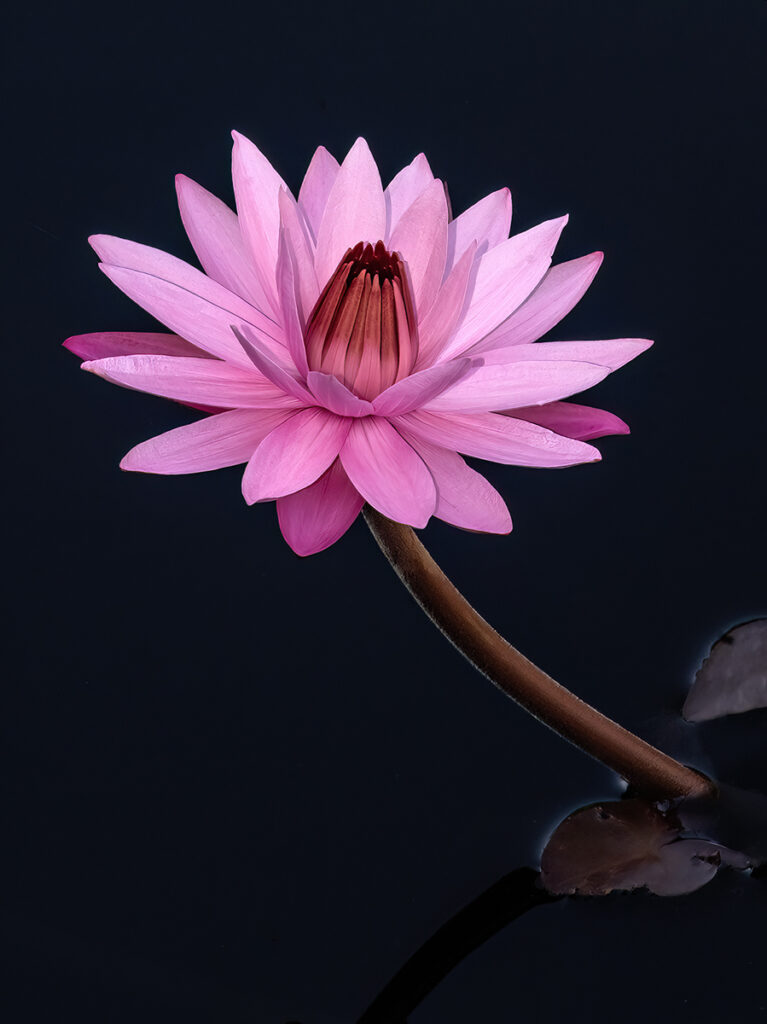
Mr. F22
With his suite of Tamron telephoto zooms, Roman Kurywczak closes up his aperture and fills the frame with Florida’s most vivid floral offerings.
Author: Jenn Gidman
Images: Roman Kurywczak
Share Article
With his suite of Tamron telephoto zooms, Roman Kurywczak closes up his aperture and fills the frame with Florida’s most vivid floral offerings.
When Roman Kurywczak was growing up in New Jersey, his mom cultivated a garden and nurtured her love of flowers—a love she passed down to her son. Today, Roman lives in southwest Florida, just an hour away from the Naples Botanical Garden, where he’s able to indulge his floral fervor all year long. “Something different is always blooming here,” he says. “I love water lilies, with their unique shape, and I’m in heaven when I stumble across passion flowers. I also love Butterfly World on the east coast, near Pompano Beach.”

For his particular style of up-close floral photography (he doesn’t necessarily like to label what he does as “macro”), Roman uses a variety of Tamron telephoto zoom lenses—including the 70-300mm Di III RXD and the 50-300mm Di III VC VXD for his Sony mirrorless camera system, the latter of which offers a Minimum Object Distance (MOD) of 8.7” at the wide end (35.4” at the tele end) and a maximum magnification ratio of 1:2 at 50mm (1:3.1 at 300mm). Roman’s suite of Tamron lenses helps bring his viewers a world bursting with vibrant colors, eye-catching textures, and intricate details—and even an occasional interloping insect.
“I love to fill the frame with the flowers in front of my camera,” Roman says. “The versatility of the Tamron telephoto zooms is perfect for my visits to the botanical garden, as I can have an orchid garden just 5 or 10 inches away from me, or a pool of water lilies that’s 5 or 10 feet away. I’m able to zoom in and compose, then zoom out and recompose. The compact size and light weight of these lenses is also key for me. I’m getting older, and when I’m carrying around a heavier lens all day, my hands can hurt by the time I’m done. The weight factor is also important if you do a lot of international travel, where weight restrictions can do you in.”

ROMAN’S QUICK TIPS
Don’t fear flash.
Supplemental lighting can be a powerful tool. A few of these photos seen here are done strictly with flash, no sunlight. In fact, when it’s sunny, I power the flash up. Think about flash like lightning. You’ll get ghosting if it’s sunny. That’s when you need to raise your shutter speed; you can see I shot at 1/640 sec. for the sunlit flower with the bee. However, I find overcast days best for my type of photography: I power my flash down and shoot at F22 and around 1/100 sec. The flash freezes any movement in my subject.

Take your time to figure out the best composition.
Sometimes the composition finds you, like when I had an accidental visitor—that bee—come buzzing in toward the flower I was photographing; in that case, I just quickly took the shot. But my thought process is usually to first consider the lighting and background, figure out if there’s anything distracting in the photo, and then alter my positioning until I have the image I want. For the yellow plumeria seen here, a popular flower in Hawaii, I took at least six or seven photos of it, from all different angles. I’ll even take pictures of the back of flowers. Sometimes the first photo I take is great—and ends up being my favorite—but I’ll still try taking shots from different perspectives to offer myself some variety.

Keep backgrounds simple.
As I mentioned earlier, I don’t want any distracting elements—the flower is the star of my photo. Many botanical gardens, including the one in Naples and Longwood in Pennsylvania, add a plant- and animal-safe black dye to the water in the flower pools to keep the algae bloom at bay, as well as to accentuate the flora. That, in combination with shooting at my preferred F22 to narrow that aperture to the size of a pinhole, isolates the flower and gives me the clean background I’m looking for.

When I was photographing the heliconia flower you see here (the one that looks like it has lobster claws attached to it), hanging from a tree, the background was far enough away so that when I shot at F22, I knew the background was going to drop out and become really black. The flash, meanwhile, highlighted the flower itself.

Don’t let colder weather put a damper on your floral photography.
In the winter months, when outdoor floral subjects may be harder to find (depending on where you’re located), you can still practice and refine your close-up photography skills by buying flowers from a local market or flower shop. Since I’m in Florida now, it’s easier for me to shoot year-round, but when I lived in Jersey this is what I would do when the weather took a turn. We once had a snowstorm around Easter, so I went to the store, bought beautiful tulips, and photographed them in the snow outside. That’s the beauty of close-up photography like this. It can be a year-round photographic adventure.
To see more of Roman Kurywczak’s work, check out his website and Instagram.


